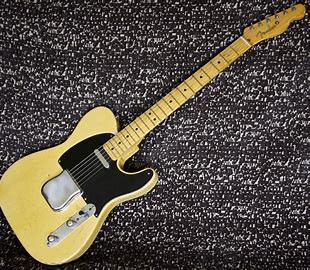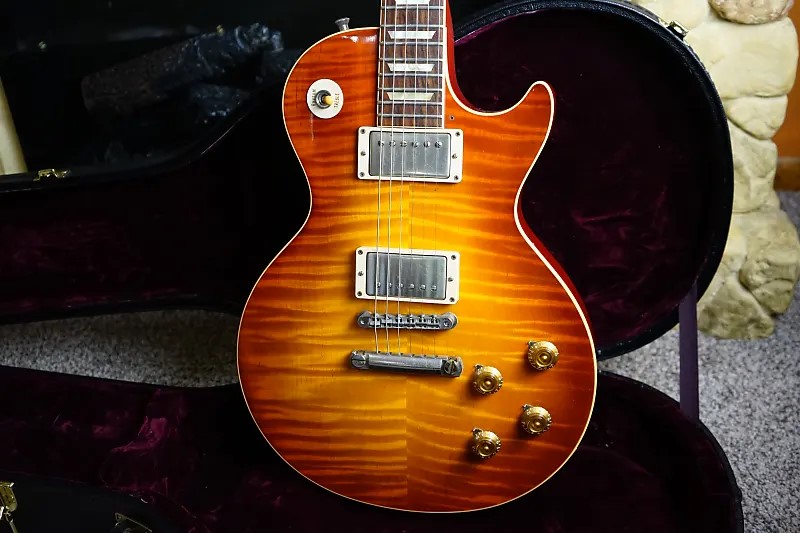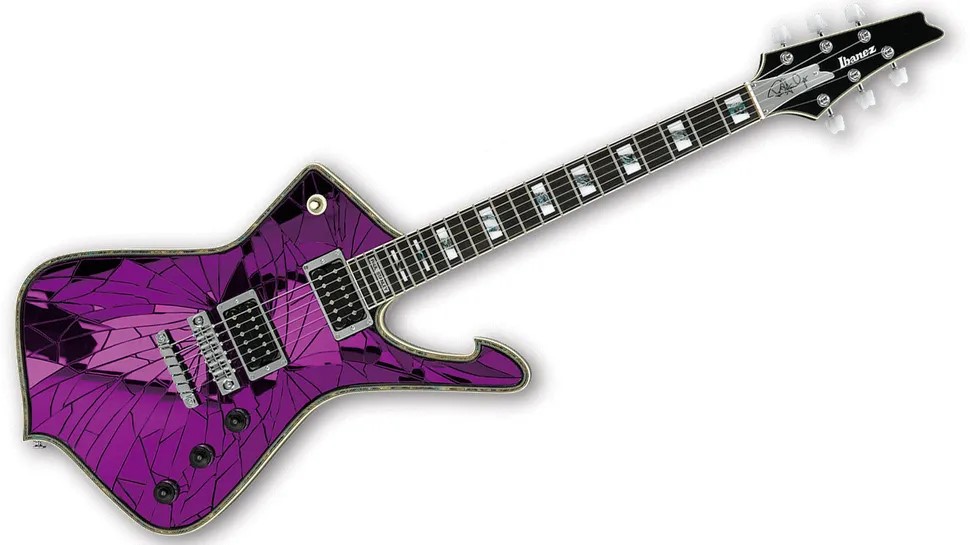Tod Hagins is a dedicated guitar enthusiast with an insatiable curiosity about the evolution of the electric guitar. With an ear finely tuned to the nuances of sound and a keen eye for craftsmanship, Tod's journey through the history of electric guitars is a fascinating exploration of innovation, creativity, and sonic expression.
In the following article, Tod Hagins explores the evolution of this iconic instrument, uncovering the stories behind legendary models like the Fender Telecaster and Gibson Les Paul; gaining insight into the transformative impact they've had on music and culture. Below, Tod Hagins traces the evolution of the electric guitar from its humble beginnings to its status as a symbol of artistic freedom and musical innovation.
Tod Hagins Traces the Journey of the Guitar
The electric guitar stands as one of the most iconic and influential instruments in modern music history. From its humble beginnings in the early 20th century to the diverse array of models available today, the electric guitar has undergone a remarkable evolution.
Innovators like George Beauchamp and Adolph Rickenbacker pioneered the development of electric guitars in the 1930s, leading to the creation of the first commercially successful electric guitar, the Rickenbacker "Frying Pan" lap steel guitar, in 1931.
Tod Hagins reports that numerous modernizations have contributed to shaping their design, electronics, and craftsmanship, thus defining the sound and tactile experience of electric guitars for future generations.
Soundtrack of Cultural Revolution
The electric guitar has played a pivotal role in shaping popular music since its inception, particularly in the birth and evolution of rock 'n' roll. In the 1950s, artists like Chuck Berry, Elvis Presley, and Buddy Holly electrified audiences with their dynamic performances, powered by the twangy tones of the electric guitar. As rock 'n' roll gained momentum, so did the electric guitar's influence, becoming synonymous with rebellion, youth culture, and the spirit of freedom.
Throughout the decades, the electric guitar continued to evolve, adapting to new musical styles and genres. In the 1960s, bands like The Beatles and The Rolling Stones propelled the electric guitar into the forefront of popular music, using it to create iconic riffs and melodies that defined an era. As the 1970s dawned, the electric guitar found new expression in the raw energy of blues-rock and the virtuosic solos of heavy metal pioneers like Black Sabbath.

Tod Hagins notes that in the 1980s, the electric guitar underwent a sonic revolution, fueled by innovations in technology and playing techniques. Shredders like Eddie Van Halen and Yngwie Malmsteen pushed the boundaries of speed and precision, while bands like Guns N' Roses and Metallica brought a new level of intensity to the rock scene. Meanwhile, in the world of jazz, artists like Pat Metheny and John Scofield redefined the genre with their innovative approaches to improvisation and tone.
Today, the electric guitar continues to be a driving force in popular music, with its versatility and expressive potential inspiring musicians across genres. From the soulful blues licks of contemporary artists like Joe Bonamassa to the intricate djent riffs of progressive metal bands like Periphery, the electric guitar remains a symbol of artistic freedom and creativity. Its ability to capture the essence of human emotion and convey it through music has ensured its enduring legacy as one of the most iconic instruments of all time.
 The Fender Telecaster
The Fender Telecaster
First introduced in 1950, the Fender Telecaster, affectionately known as the "Tele," was the world's first commercially successful solid-body electric guitar. With its simple yet elegant design, featuring a single-cutaway body, two single-coil pickups, and a fixed bridge, the Telecaster offered players a bright, twangy sound that defined the sound of country and rockabilly music. Renowned for its durability and versatility, the Telecaster remains a beloved classic among guitarists worldwide.
 The Gibson Les Paul
The Gibson Les Paul
Debuted in 1952, the
Gibson Les Paul quickly became synonymous with rock and roll, thanks to its powerful sound and distinctive design. Tod Hagins notes that conceived by legendary guitarist and inventor Les Paul, this iconic model featured a solid mahogany body, carved maple top, and dual humbucking pickups, delivering thick, warm tones with sustain for days. The Les Paul's timeless appeal and unparalleled craftsmanship have made it a staple in the arsenal of countless guitarists, from Jimmy Page to Slash.
The Fender Stratocaster
Introduced in 1954, the
Fender Stratocaster revolutionized the electric guitar industry with its innovative design and versatile sound. Tod Hagins says that designed by Leo Fender and his team, the Stratocaster featured a contoured body, three single-coil pickups, and a tremolo system, allowing players to achieve a wide range of tones and expressive techniques. Its sleek, ergonomic design and smooth playability made it a favorite among musicians across various genres, from rock and blues to jazz and country.
Innovations in Design and Electronics
Tod Hagins says that over the decades, electric guitar manufacturers have continued to innovate, introducing new features and technologies to enhance playability, tone, and performance. From advanced pickup configurations and switching systems to ergonomic body designs and improved hardware, modern electric guitars offer a level of versatility and customization never before seen in the instrument's history. Whether it's the versatility of the Stratocaster's HSS pickup configuration or the vintage-inspired tone of the Les Paul's Burstbucker pickups, today's electric guitars cater to a wide range of playing styles and preferences.
 Conclusion
Conclusion
The evolution of electric guitars, from the groundbreaking designs of the 1950s to the cutting-edge innovations of the present day, reflects the ingenuity and creativity of generations of luthiers, engineers, and musicians. As iconic models like the Fender Telecaster, Stratocaster and Gibson Les Paul continue to shape the sound of popular music, their timeless appeal and enduring legacy serve as a testament to the enduring power of the electric guitar in the world of music. Whether you're a seasoned professional or an aspiring musician, the journey through the evolution of electric guitars is a fascinating exploration of craftsmanship, technology, and sonic expression.
 Tod Hagins notes that in the 1980s, the electric guitar underwent a sonic revolution, fueled by innovations in technology and playing techniques. Shredders like Eddie Van Halen and Yngwie Malmsteen pushed the boundaries of speed and precision, while bands like Guns N' Roses and Metallica brought a new level of intensity to the rock scene. Meanwhile, in the world of jazz, artists like Pat Metheny and John Scofield redefined the genre with their innovative approaches to improvisation and tone.
Today, the electric guitar continues to be a driving force in popular music, with its versatility and expressive potential inspiring musicians across genres. From the soulful blues licks of contemporary artists like Joe Bonamassa to the intricate djent riffs of progressive metal bands like Periphery, the electric guitar remains a symbol of artistic freedom and creativity. Its ability to capture the essence of human emotion and convey it through music has ensured its enduring legacy as one of the most iconic instruments of all time.
Tod Hagins notes that in the 1980s, the electric guitar underwent a sonic revolution, fueled by innovations in technology and playing techniques. Shredders like Eddie Van Halen and Yngwie Malmsteen pushed the boundaries of speed and precision, while bands like Guns N' Roses and Metallica brought a new level of intensity to the rock scene. Meanwhile, in the world of jazz, artists like Pat Metheny and John Scofield redefined the genre with their innovative approaches to improvisation and tone.
Today, the electric guitar continues to be a driving force in popular music, with its versatility and expressive potential inspiring musicians across genres. From the soulful blues licks of contemporary artists like Joe Bonamassa to the intricate djent riffs of progressive metal bands like Periphery, the electric guitar remains a symbol of artistic freedom and creativity. Its ability to capture the essence of human emotion and convey it through music has ensured its enduring legacy as one of the most iconic instruments of all time.
 The Fender Telecaster
The Fender Telecaster The Gibson Les Paul
The Gibson Les Paul Conclusion
Conclusion